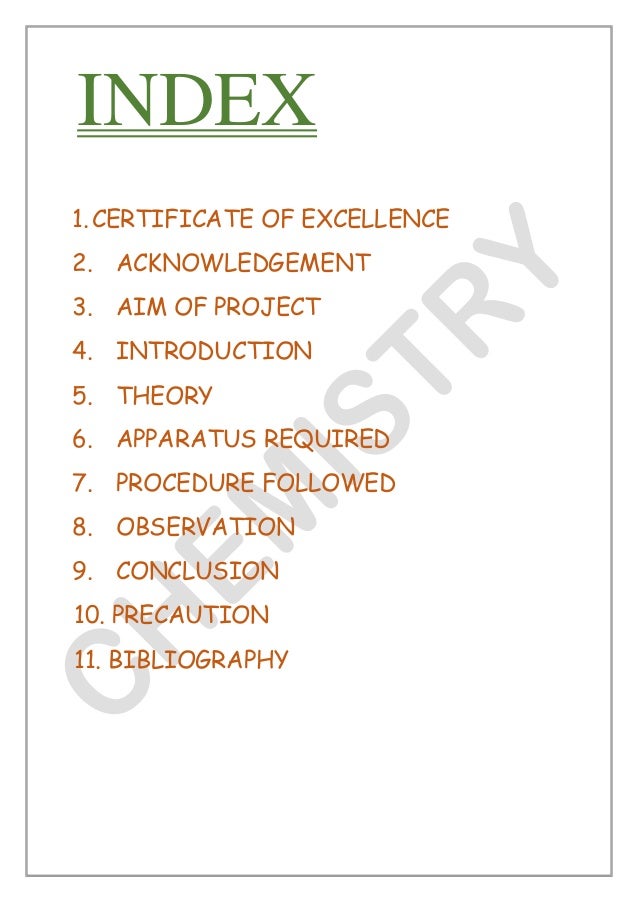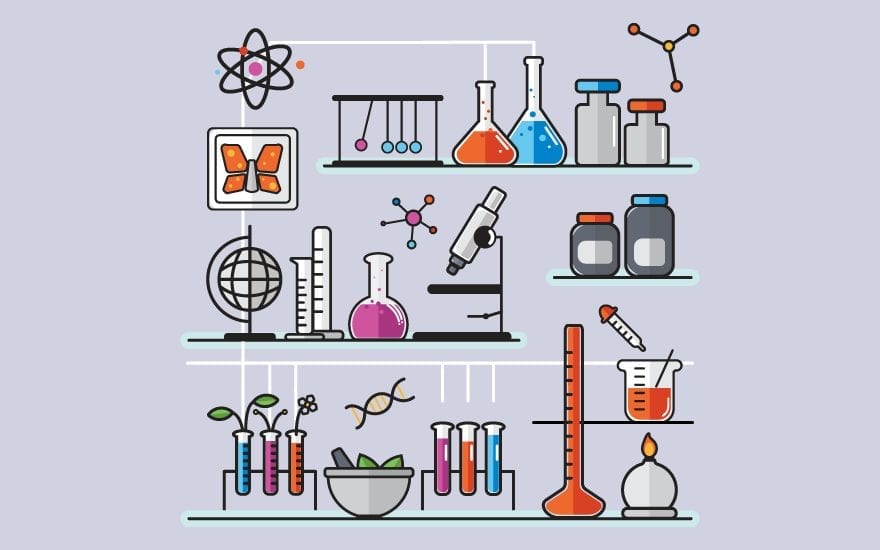Chemistry Investigatory Projects For Class 12
- Class 12 Chemistry Investigatory Project Casein In Milk
- Chemistry Investigatory Projects For Class 12 Cbse Download Pdf On Polymers
- Chemistry Investigatory Projects For Class 12
Introduction to green chemisty from Rohan Sinha Chemistry investigatory project from Sidrah Abbasi Preparation of p. It is chemistry project for class 12 by KENDRIYA VIDYALAYA NO. 2 NAUSENABAUGH, VISAKHAPATNAM DEPARTMENT OF CHEMISTRY CERTIFICATE RAHUL KUSHWAHA. CBSE Science Projects Class IX; List of projects for CBSE Class 12 Biology Examination along with description can be found here Investigatory project.
TRANSCRIPT

- 1. 2013-14 RAHUL KUSHWAHA KV NO.2, NSB, VISAKHAPATNAM CHEMISTRY INVESTIGATORY PROJECT
Class 12 Chemistry Investigatory Project Casein In Milk

Chemistry Investigatory Projects For Class 12 Cbse Download Pdf On Polymers
Chemistry Investigatory Projects For Class 12
2. KENDRIYA VIDYALAYA NO. 2 NAUSENABAUGH, VISAKHAPATNAM DEPARTMENT OF CHEMISTRY CERTIFICATE This is to certify that RAHUL KUSHWAHA, a student of class XII-A has successfully completed the research on the below mentioned project under the guidance of Mr. B.Sreedhar ( Subject Teacher ) during the year 2013-14 in partial fulfillment of chemistry practical examination conducted by AISSCE, New Delhi. Signature of external examiner Signature of chemistry teacher 3. ACKNOWLEDGEMENT In the accomplishment of this project successfully, many people have best owned upon me their blessings and the heart pledged support, this time I am utilizing to thank all the people who have been concerned with project. Ea cricket games for android download. Primarily I would thank god for being able to complete this project with success. Then I would like to thank my principal Mr. S.V.Babu and Chemistry teacher Mr.B.Sreedhar, whose valuable guidance has been the ones that helped me patch this project and make it full proof success his suggestions and his instructions has served as the major contributor towards the completion of the project. Then I would like to thank my parents and friends who have helped me with their valuable suggestions and guidance has been helpful in various phases of the completion of the project. Last but not the least I would like to thank my classmates who have helped me a lot. 4. INDEX 1.CERTIFICATE OF EXCELLENCE 2. ACKNOWLEDGEMENT 3. AIM OF PROJECT 4. INTRODUCTION 5. THEORY 6. APPARATUS REQUIRED 7. PROCEDURE FOLLOWED 8. OBSERVATION 9. CONCLUSION 10. PRECAUTION 11. BIBLIOGRAPHY 5. AIM OF THE EXPERIMENT To study the setting of mixture of cement with sand, time and fly ash with respect to time and strength. 6. INTRODUCTION In the most general sense of the word, CEMENT is a binder, a substance that sets and hardens independently, and can bind other materials together. The word cement traces to the Romans, who used the term opus caementicium to describe masonry resembling modern concrete that was made from crushed rock with burnt lime as binder. The volcanic ash and a pulverized brick additive that were added to the burnt lime to obtain a hydraulic binder were later referred to as cementum, cimentum, cament and cement. The most important use of cement is the production of mortar and concrete The bonding of natural or artificial aggregates to form a strong building material that is durable in the face of normal environment effects. 7. Cement is made by heating limestone (calcium cabonate), with small quantities of other materials (such as clay) to 1450C in a kiln, in aprocess known as calcination, whereby a molecule of carbon dioxide is liberated from the calcium carbonate to form calcium oxide,or quicklime,which is then blended with the other materials that have been included ih the mix. The resulting hard substance, called clinker, is then ground with a small amount of gypsum into a powder to make Ordinary Portland Cement, the most commonly used type of cement(often referred to as OPC).Portland cement is a basic ingredient of concrete, mortar and non speciality grout. The most common use for portland cement is in the production of concrete. Concrete is a composite material consisting of aggregate (gravel and sand), cement and water. As a construction material, concrete can be cast in almost any shape desired and once hardened, can become a structural (load baering) element. Portland cement may be gray or white. Portland cement 8. Construction of buildings using cement Cement used in construction is characterised as hydraulic or non-hydraulic. Hydraulic cements (eg. Portland cement) harden because of hydration chemical reactions that occurs independently Of the mixtures water content; they can harden even underwater or when constantly exposed to wet weather. The chemical reaction that results when the anhydrous cement powder is mixed with water produces hydrates that are not water-soluble. Non- hydraulic cements (eg. Lime and gypsum plaster) must be kept dry in order to retain their strength. 9. EFFECT OF QUALITY OF SAND ON SETTING OF CEMENT MORTAR Sand obtained from different sources has different qualities. For example, Sea sand obtained from sea contains unwanted salts and retards setting of cement and is not suitable for making mortar. On the other hand, Pit sand is obtained from pits in the soil and the River sand obtained from riverbed is considered excellent for preparing mortar and concrete. 10. EFFECT OF TIME ON SETTING OF CEMENT MORTAR Time has an important role on strength of developed cement mortar. When a cement paste in the ratio 1:3 in water is allowed to dry, the strength of solid mass keeps on increasing with increase in time given for setting. It acquires a nearly full strength in 28 days. 11. APPARATUS REQUIRED 1.Beakers, glass rods, weight box, matchboxes BEAKER GLASS RODS WEIGHT MATCHBOX BEAKERS 2. Limestone, river sand, cement and fly ash LIMESTONE RIVER SAND 12. CEMENT FLY ASH PROCEDURE 1. Prepare mixtures of various compositions as given in Observation table. 2. Take each of the given mixtures in different beakers and prepare their pastes by adding minimum amount of water 3. Take nine cases of empty match boxes and mark them from 1 to 9. 4. Fill the three cases with the paste of each composition. 5. Spray water from time to time over the paste ,so that they remain moist all the time. 6. After three days, take out one slab of each composition and test their strengths. 13. 7. Similarly, take out a set of three slabs after 7 days after 30 days respectively and test their strengths SL. NO. COMPOSITION OF MIXTURE AND RATIO MINIMUM WEIGHT TO BREAK THE SLAB AFTER 3 DAYS 7 DAYS 10 DAYS 1 CEMENT:RIVER SAND(1:3) 18 GRAM 20 GRAM 30 GRAM 2 CEMENT:RIVER SAND:FLY ASH (2:9:1) 16 GRAM 18 GRAM 26 GRAM 3 CEMENT:RIVER SAND:LIME (1:3:1) 10 GRAM 15 GRAM 20 GRAM By seeing the observation we can estimate the hardness of the slab. OBSERVATION 14. The strength of the slab increases with the increase in setting time allowed. ___________________________________________________________________________________________________________________________________________________________________ ___________________________________________________________________________________________________________________________________________________________________ Handle the glass wares safely. Allow the time required to set. Spray only required amount of water. BIBLIOGRAPHY CONCLUSION 15. HELP FROM INTERNET INFORMATIO N FROM LIBRARY HELP FROM TEACHERS